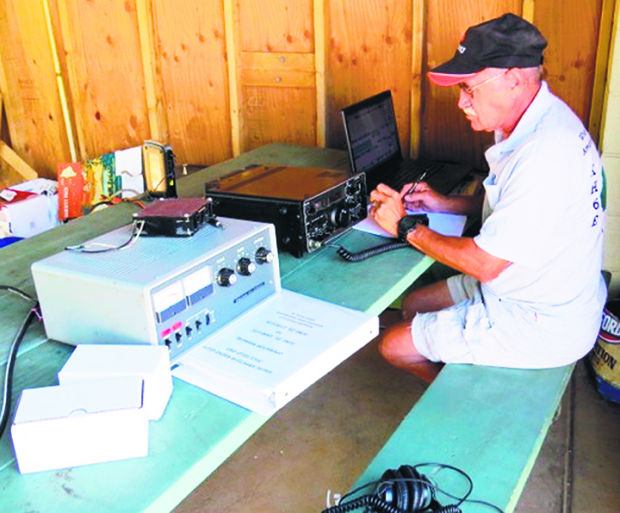One of the two greatest challenges in the face of disaster is communication, Mark Marshall, head of the Kauai Civil Defense, and Steve Soltysik, representing the American Red Cross, said during a disaster preparedness workshop Sunday. “Cellphones become useless because
One of the two greatest challenges in the face of disaster is communication, Mark Marshall, head of the Kauai Civil Defense, and Steve Soltysik, representing the American Red Cross, said during a disaster preparedness workshop Sunday.
“Cellphones become useless because towers, if they survive the disaster, will be overloaded,” Soltysik said. “One of the things people do as disaster preparedness is establish a contact who is out of state because sometimes it is easier to make contact that way.”
Dick Olsen of the Kauai Amateur Radio Club said amateur radio operators often provide backup communications for everything from the American Red Cross to the Federal Emergency Management Agency, and even for the International Space Station.
“Despite the Internet, cellphones, email and modern communications, every year, entire regions find themselves in the dark,” Olsen said in a release. “Tornadoes, fires, storms, ice, and even occasional cutting of fiber optic cables leave people without the means to communicate.”
Olsen said Kauai’s amateur radio operators, often labelled “hams,” will be joining thousands of other amateur radio operators nationwide, showing their emergency communications capabilities during the Radio Field Day from 10 a.m. to 4 p.m. June 28 at the Nawiliwili Yacht Clubhouse at the Nawiliwili Small Boat Harbor.
“On Kauai during Hurricane Iniki, amateur radio was initially the only way people could communicate,” Olsen said. “When trouble is brewing, amateur radio operators are often the first to provide rescuers with critical information and communications.”
The public is invited to the field day where Kauai ham radio operators will be available to provide more information on amateur radio capabilities as well as host public demonstrations of emergency communications abilities. People will also be able to learn how to get their own FCC radio license.
The field day, where more than 35,000 amateur radio operators participated in 2013, brings the weeklong Amateur Radio Week to an end, sponsored by the ARRL, the national association for amateur radio.


